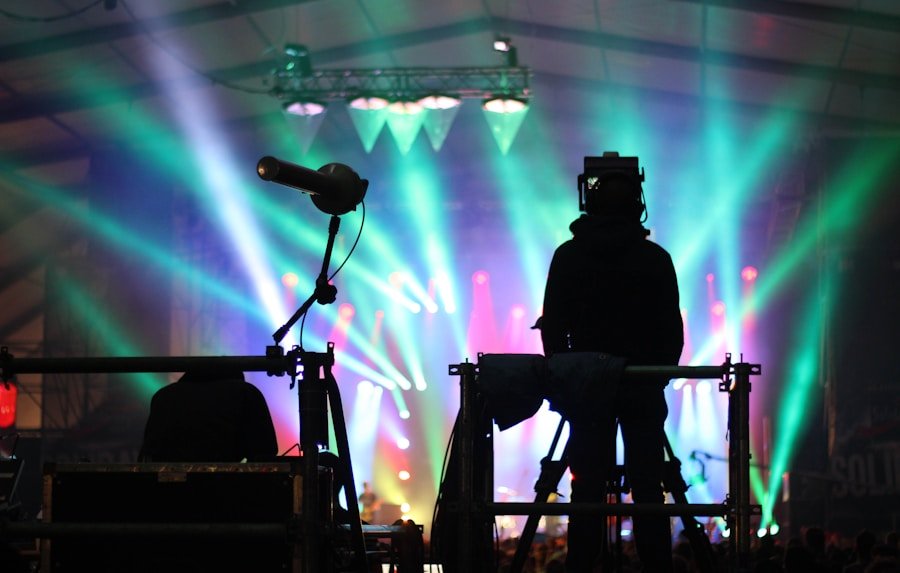Photo essays are a powerful form of visual storytelling that can convey a compelling narrative through a series of carefully curated images. Unlike traditional written essays, photo essays rely on the visual impact of photographs to evoke emotion, convey information, and tell a story. The combination of images and text can create a powerful and immersive experience for the viewer, allowing them to connect with the subject on a deeper level. Photo essays can cover a wide range of topics, from social issues and environmental concerns to personal stories and cultural events. They have the ability to capture the essence of a subject in a way that words alone cannot, making them a valuable tool for communication and advocacy.
When creating a photo essay, it’s important to consider the impact that the images will have on the viewer. Each photograph should be carefully chosen to convey a specific emotion or message, and the sequence of images should flow in a way that tells a cohesive story. By understanding the power of photo essays, photographers can harness the visual medium to create impactful and thought-provoking narratives that resonate with their audience.
Choosing a Compelling Subject
The first step in creating a photo essay is choosing a compelling subject that will resonate with your audience. The subject should be something that you are passionate about and that has the potential to evoke emotion and spark interest. Whether it’s a social issue, a cultural event, or a personal story, the subject should be something that you can capture in a visually engaging way. Consider what aspects of the subject you want to highlight and what message you want to convey through your images. By choosing a compelling subject, you can create a photo essay that will captivate and inspire your audience.
When selecting a subject for your photo essay, it’s important to consider the accessibility and ethical implications of photographing your chosen topic. Ensure that you have the necessary permissions and access to capture your subject in a respectful and responsible manner. Additionally, consider the potential impact that your images may have on the subject and their community, and take steps to minimize any negative consequences. By choosing a compelling subject and approaching it with sensitivity and respect, you can create a photo essay that is both visually stunning and ethically sound.
Planning and Researching Your Photo Essay
Before embarking on your photo essay project, it’s important to thoroughly plan and research your subject to ensure that you capture it in the most effective way possible. Start by conducting background research on your chosen topic to gain a deeper understanding of its context, history, and significance. This will help you identify key elements to focus on and provide valuable insights that can inform your approach to capturing the subject through photography.
Once you have a solid understanding of your subject, begin planning the logistics of your photo essay project. Consider factors such as location, timing, and access to ensure that you can capture the images you need to tell your story effectively. Create a shot list outlining the specific images you want to capture, as well as any supporting shots or details that will enhance the narrative. By thoroughly planning and researching your photo essay, you can ensure that you are well-prepared to capture your subject in a compelling and meaningful way.
Capturing Emotion and Storytelling through Images
One of the key elements of a successful photo essay is the ability to capture emotion and convey storytelling through images. Each photograph should evoke a specific emotion or reaction from the viewer, whether it’s empathy, curiosity, or inspiration. Look for moments that convey raw emotion or tell a compelling story, and use composition, lighting, and framing to enhance the impact of your images. By capturing emotion and storytelling through your photographs, you can create a powerful and immersive experience for your audience.
In addition to capturing emotion, it’s important to consider the technical aspects of photography when creating a photo essay. Pay attention to factors such as exposure, focus, and composition to ensure that your images are visually engaging and technically sound. Experiment with different angles, perspectives, and techniques to create dynamic and visually striking photographs that effectively convey your message. By combining emotional storytelling with strong technical skills, you can create a photo essay that resonates with your audience on multiple levels.
Sequencing and Editing Your Photos
Once you have captured a collection of compelling images for your photo essay, it’s time to sequence and edit them in a way that tells a cohesive and impactful story. Consider the flow of your images and how they relate to each other, arranging them in a way that creates a narrative arc or visual progression. Pay attention to factors such as composition, color, and mood to ensure that your images work together harmoniously to convey your message.
In addition to sequencing your photos, it’s important to edit them in a way that enhances their visual impact while maintaining their authenticity. Use editing tools to adjust factors such as exposure, contrast, and color balance to bring out the best in each image. Avoid over-editing or altering the essence of your photographs, instead focusing on enhancing their natural beauty and emotional resonance. By carefully sequencing and editing your photos, you can create a cohesive and visually stunning photo essay that effectively conveys your message.
Adding Context and Supporting Text
While the images in a photo essay are the primary focus, adding context and supporting text can enhance the viewer’s understanding of the subject and provide valuable insights into the narrative. Consider including captions or short paragraphs alongside your images to provide context, background information, or personal reflections that complement the visual storytelling. This additional text can help guide the viewer through the photo essay and provide valuable context that enriches their experience.
When adding context and supporting text to your photo essay, it’s important to strike a balance between providing information and allowing the images to speak for themselves. Keep your text concise and focused, providing just enough information to enhance the viewer’s understanding without overwhelming or distracting from the visual impact of the photographs. Consider how the text complements the images and adds depth to the narrative, ensuring that it enhances rather than detracts from the overall experience of the photo essay.
Sharing and Promoting Your Photo Essay
Once you have completed your photo essay, it’s time to share it with your audience and promote it to reach a wider audience. Consider where and how you want to showcase your photo essay, whether it’s through an online platform, social media, or in a physical exhibition. Tailor your approach based on your target audience and how they are most likely to engage with your work.
When sharing and promoting your photo essay, consider how you can leverage storytelling techniques to engage and captivate your audience. Use social media platforms or online galleries to share behind-the-scenes insights into your creative process or personal reflections on the subject matter. Consider collaborating with other creatives or organizations to amplify the reach of your photo essay and engage with new audiences. By sharing and promoting your photo essay effectively, you can maximize its impact and reach a wider audience with your powerful visual storytelling.
In conclusion, creating a compelling photo essay requires careful planning, thoughtful storytelling, and strong technical skills. By understanding the power of photo essays and choosing a compelling subject, photographers can create visually stunning narratives that resonate with their audience. Thorough planning and research are essential for capturing emotion and storytelling through images, while sequencing and editing photos help create a cohesive narrative arc. Adding context and supporting text enriches the viewer’s understanding of the subject, while sharing and promoting the photo essay maximizes its impact. With these key elements in mind, photographers can create impactful photo essays that captivate and inspire their audience.








